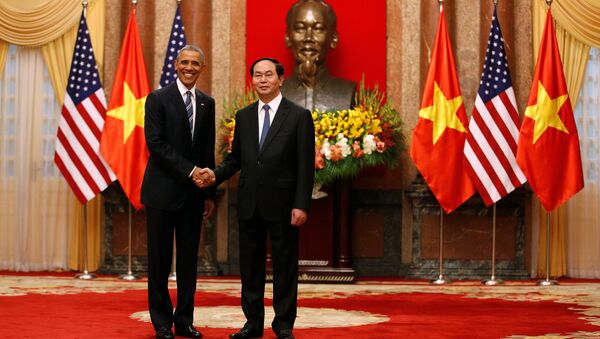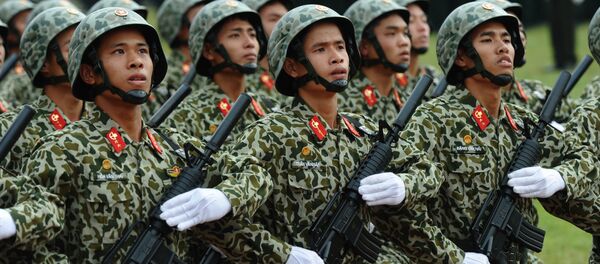WASHINGTON (Sputnik) — Earlier in the day, Obama announced the end of the arms embargo in Hanoi during his state visit to Vietnam, the first by a sitting US president.
"First off, it's clear that Obama's visit to Vietnam is part of the US effort to coordinate anti-Chinese policies throughout the Pacific Rim," US foreign affairs expert and author Dan Lazare said on Monday.
"Just as the United States has sought to cordon Russia off in the West by ringing it with nearly a dozen hostile states extending from Georgia to the Baltics, it is plainly intent on doing the same in the east by orchestrating an anti-Chinese alliance from Vietnam to Japan," Lazare stated.
Lazare noted that the United States would seek to negotiate a series of lucrative arms deals with Vietnam.
"No arms deals are in the works according to today's Financial Times, although this will undoubtedly change of tensions continue to escalate — as they probably will," he said.
However, Vietnam would retain its traditional warm relations with Russia, Lazare argued.
"My guess is that Hanoi wants to safeguard its ties with Moscow as well. Vietnam is a cagey player on the international scene and it prizes its independence, so I think it will do everything it can to preserve its maneuvering room toward both Russia and the United States," Lazare explained.
US historian and political commentator Patrick Smyth agreed that Obamas visit to Hanoi and lifting of the arms embargo was part of a far broader strategy aimed at China.
It is another step in Washington’s effort to militarize the western Pacific. This was prefigured when Defense Secretary Ashton Carter stood on the deck of the Stennis some weeks ago as it sailed through the South China Sea and declared ‘China is militarizing the Pacific.’"
Smyth maintained that Obama’s emphasis on military issues during his visit to Hanoi revealed his real motives in going there.
"Look at the agenda. It is all about military ties — and hence, implicitly, the extent to which American foreign policy has been thoroughly militarized. There is no other dimension at this point," Smyth noted.
Obama’s focus on Beijing was clear, Smyth insisted.
"This is explicitly focused on containing China. It is absolutely explicit in our news reports today… It is plain as day that containment of China runs all through American initiatives in Asia now, and I cannot think of a single exception."
The 12-nation Trans Pacific Partnership free trade agreement, the Pentagon’s aggressive activities in the South China Sea and the US military relationships with nations in Southeast Asia were all part of the same agenda to contain China, Smyth concluded.




